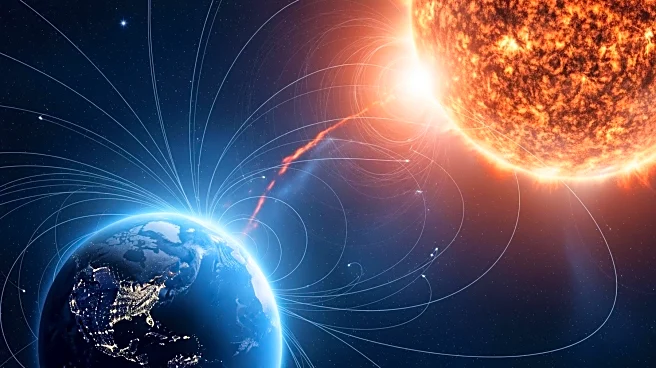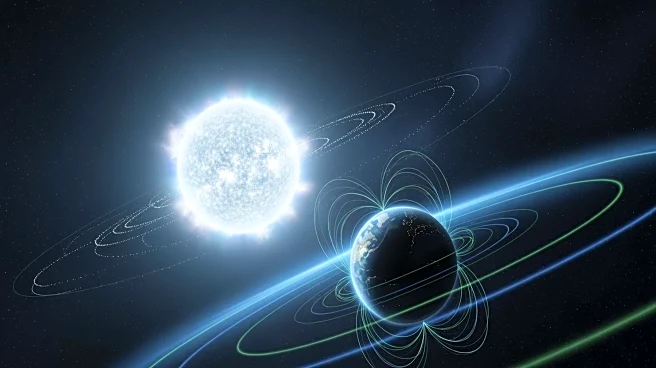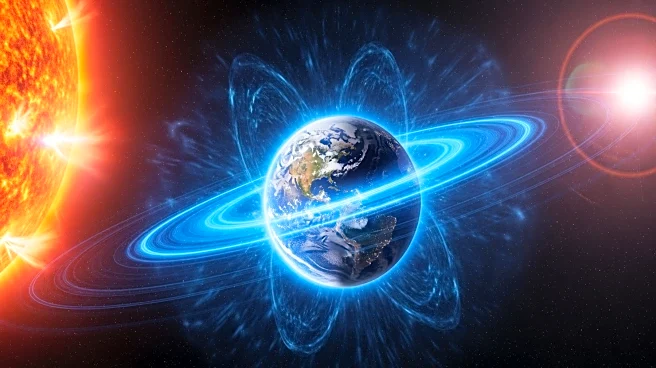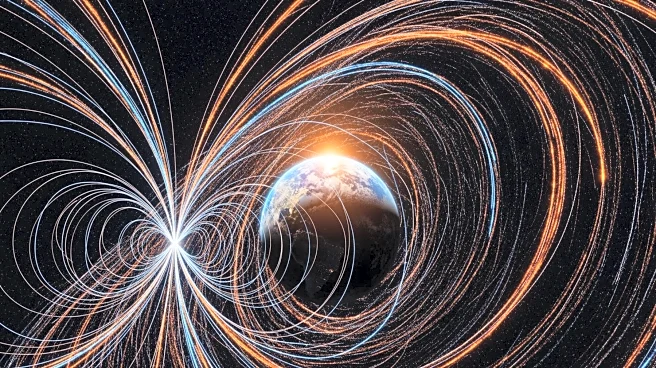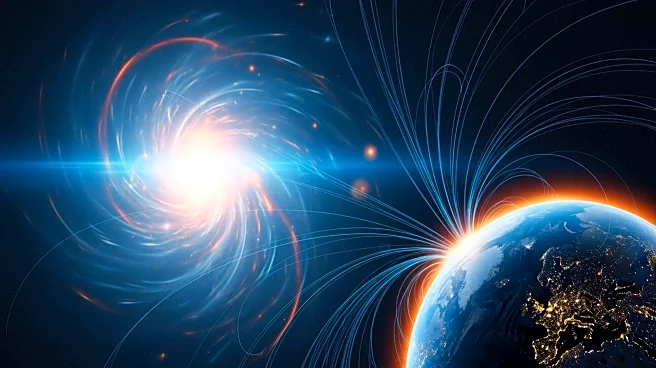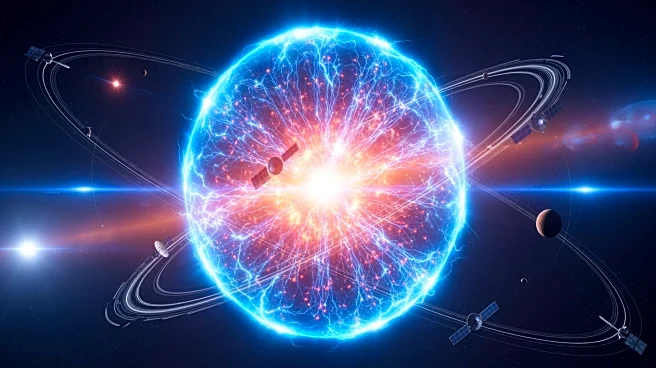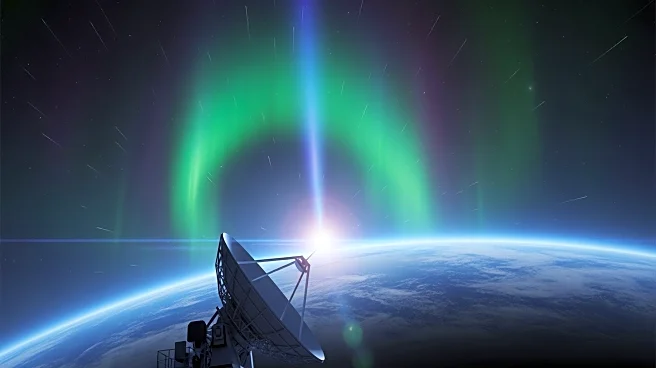What's Happening?
A stealth solar storm reached Earth on November 20, catching scientists off guard due to its lack of visible warning signs. Unlike typical coronal mass ejections (CMEs), stealth solar storms are difficult
to detect as they leave no bright traces. This event did not cause a geomagnetic storm but may have contributed to auroras in mid-latitude regions. NOAA experts observed changes in solar wind patterns, indicating the presence of a stealth CME. The storm highlights the unpredictable nature of solar activity and the challenges in forecasting such events.
Why It's Important?
The occurrence of stealth solar storms underscores the need for improved monitoring and prediction systems for space weather. These storms can impact satellite operations, communication systems, and power grids, posing risks to technological infrastructure. Understanding stealth CMEs is crucial for mitigating potential disruptions and protecting critical systems. The event serves as a reminder of the Sun's unpredictable behavior and the importance of continued research in solar physics to enhance preparedness for future solar events.
What's Next?
Scientists will likely focus on developing better detection methods for stealth solar storms to improve forecasting accuracy. Research may explore the mechanisms behind these quiet eruptions and their potential impacts on Earth's space environment. Collaboration between space agencies and research institutions could lead to advancements in space weather prediction models. Public awareness campaigns may be initiated to educate stakeholders about the risks associated with solar storms and the importance of preparedness.
